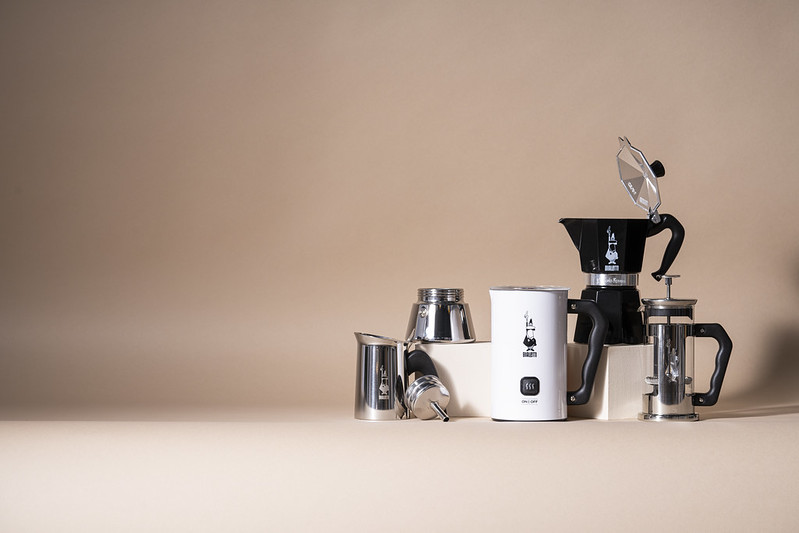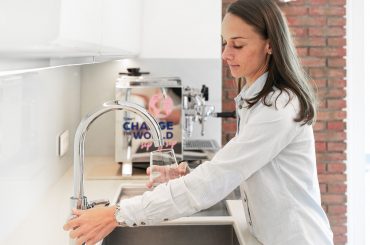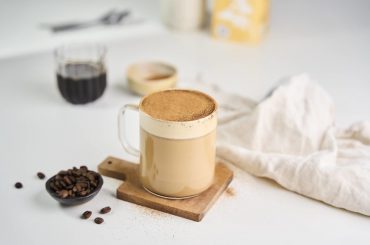Let’s be clear! Offices don’t necessarily serve supreme coffee. Usually it’s either instant coffee, or pre-ground coffee from the supermarket. Without doubt, providing an espresso machine that will easily make several coffees a day is usually a substantial expense and it requires designated space, which is usually scarce in staff rooms. Is there any other option? How to provide good coffee for all employees at a low cost? You’ll find the answer in this article.
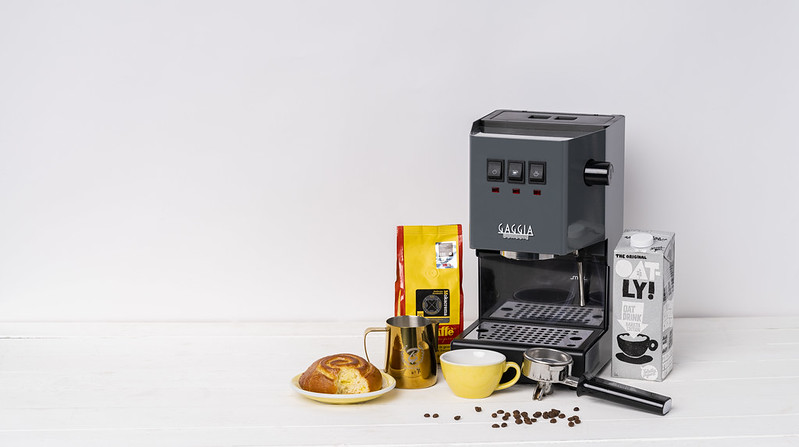
Times when you rushed into a popular coffee chain for a large soy latte to take away on your way to work have become history for many people. According to the Polish Promotional Programme Foundation on the basis of the research carried out by ASM Market Research and Analysis Centre, the Poles have been increasingly valuing quality over price. In the coffee industry it means that we are more and more often looking for full-bodied coffee, we want the beans to be freshly roasted and we want to know where they came from. We tend to choose pour-over coffee over espresso-based coffee, which is a trend that we also witness daily in our coffee shops.
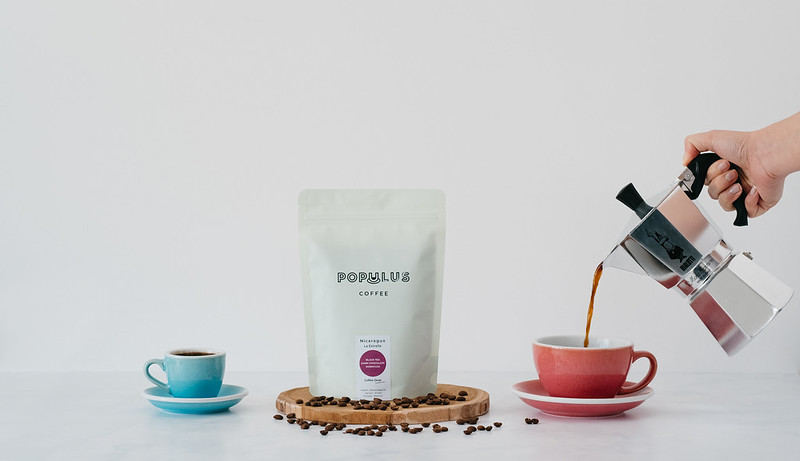
Pour-over methods of brewing coffee are perfect for every company that wants their employees and guests enjoy top-quality coffee without spending much on professional espresso machines. How to start?
Regardless of the method you choose, first you may decide to buy a few universal accessories.
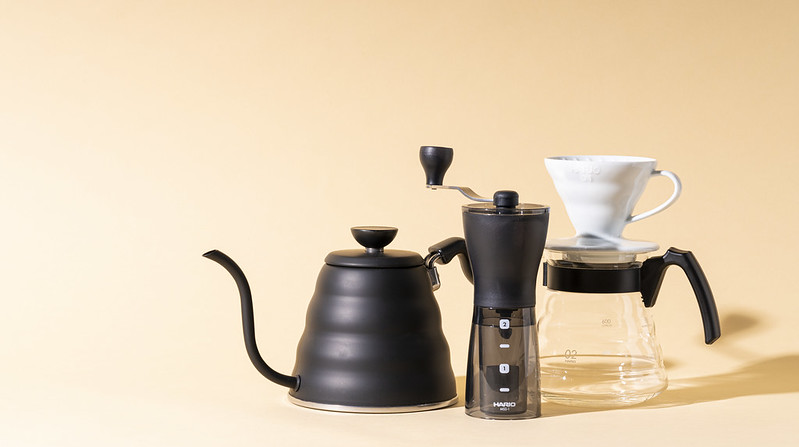
Grinder. If you want to get a rich tasting coffee, it’s best to grind the beans right before brewing. Pre-ground coffee loses aroma faster than whole beans. Good automatic grinders for pour-over methods are available already at PLN 240. Good examples are: Melitta Molino or a slightly more expensive Wilfa Svart. If, on the other hand, you want your employees to take a short break and have a decent bicep workout, you may consider a manual grinder. Hario and Rhinowares grinders are both affordable and of good quality. Nothing tastes like coffee earned with the strength of your muscles.

Hot water. That’s something you can’t skip. Equipping your office with a high-quality kettle, ideally with a special gooseneck, is a good idea but you can do without it. The water used for brewing should be pre-filtered in a filter jug. You can also use bottled spring water that will positively affect the final taste of the brew.

Scales. It’s an optional device but note that coffee tastes best if all components of the brew are dosed perfectly.
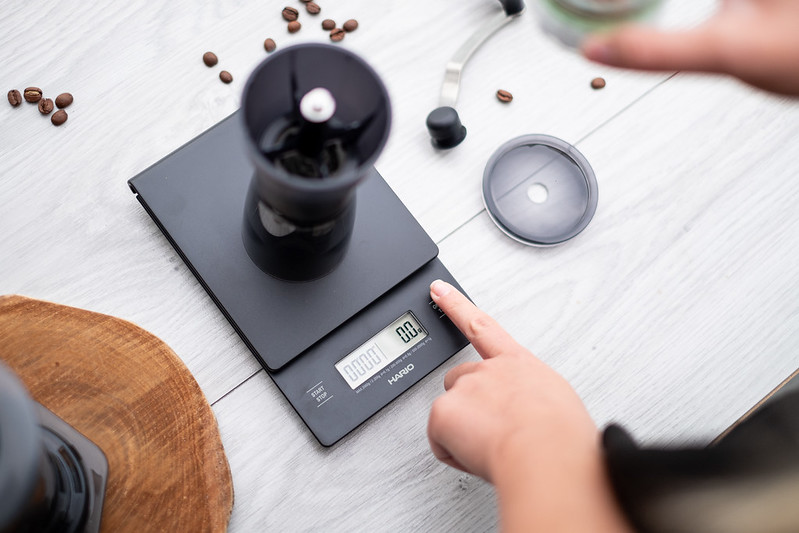
You’ve Got All the Necessary Accessories. Time to Pick Up the Brewer!
The best possible solution for the office is a filter coffee machine like Moccamaster, which has been the most iconic automatic coffee brewer for over 50 years. On top of excellent design it is also characterized by: brewing a large batch of coffee at a time, relatively quiet operation and the possibility to keep coffee warm, which minimizes waste and, in consequence, reduces costs. The whole brewing process takes up about 6 minutes and the machine comes with a 5-year warranty!
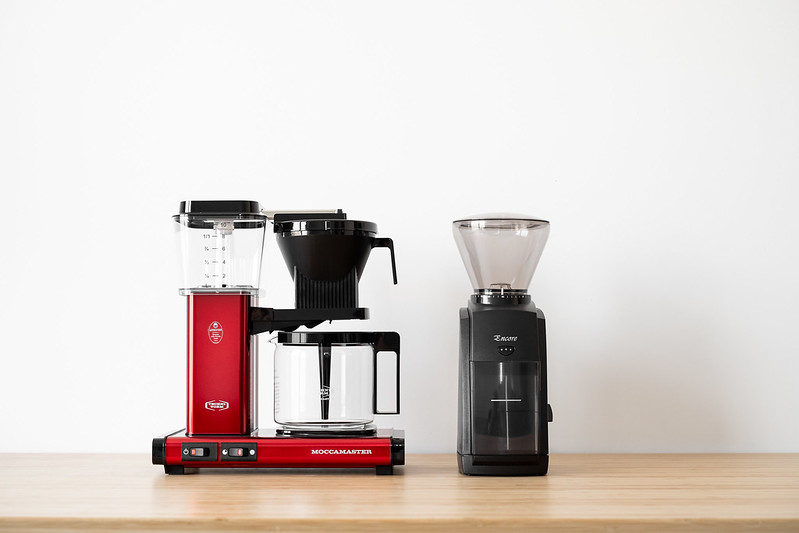
If, on the other hand, you’ve decided to create an innovative coffee corner for your employees, you can equip it with the following accessories. Brewing coffee is a good getaway from work and a moment to relax.
Dripper V60 is synonymous with coffee revolution. Start the revolution in your company as well! The cost of such a brewer is about PLN 20-200, the prices differ based on the material of which the dripper is made. You’ll also need filters, at about PLN 20 for a pack with 100 filters. The advantages of a dripper are: low cost of purchase, durable material and filter coffee. The disadvantages: you don’t get much coffee from a single brew and you need to buy a gooseneck kettle.
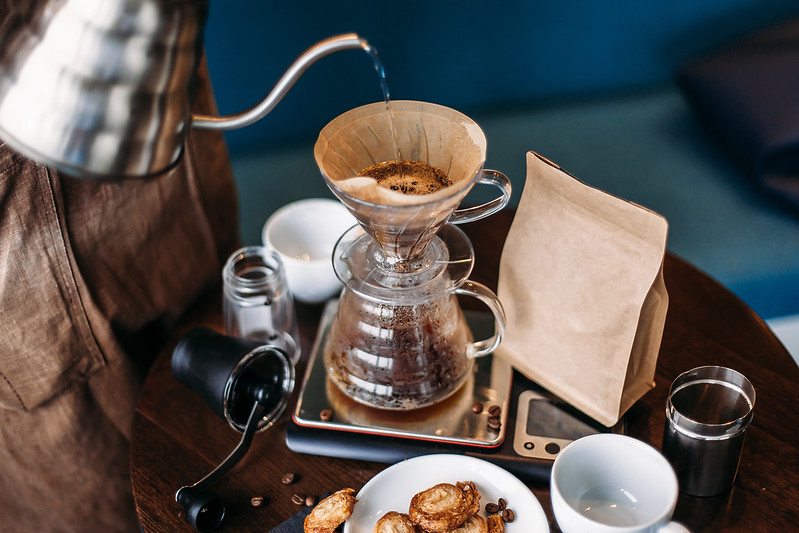
Another similar device is Chemex. You can choose among a few available sizes, the smallest one brews 3 cups of coffee and the largest one – 10 cups. The price is around PLN 200. The disadvantages are: relatively expensive filters, delicate tea-like brew (not to everyone’s liking) and fragile material of which Chemex is made. The advantages are: possibility to brew larger amount of coffee at once and a beautiful design.
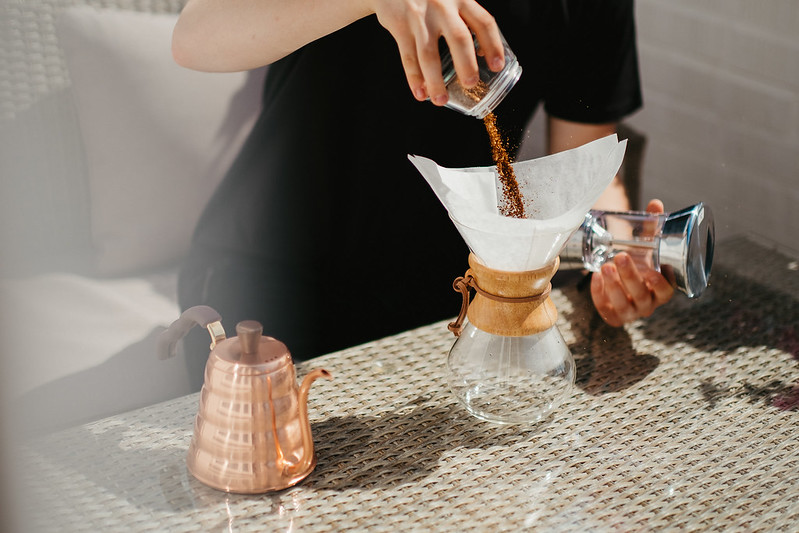
French Press. Famous and loved! The design and functionality of French Press make it a popular choice among office workers. In my opinion, it’s a perfect device for a start. With no extra filters and at a relatively low price (less than PLN 100) you’re able to prepare a few cups of coffee. All you need to do is put coffee into French Press and pour water over it. Disadvantages: you need to get rid of the coffee grounds and wash the device every time plus the brew is slightly ‘dirty’ as compared with methods that use filters. Advantages: it’s easy to use, you don’t need a gooseneck kettle and you can prepare a few cups of coffee at once.
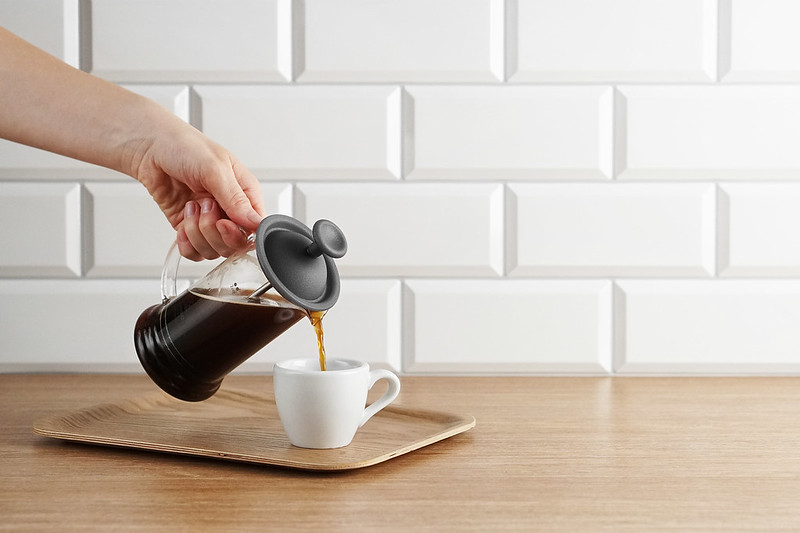
Aeropress. Personally, it’s my favourite brewer. It is a versatile and compact device which brews a small cup of coffee. Its greatest advantages are: you have a big impact on the final brew (a lot of variables), it’s light and compact, and it’s made of durable materials. The definite disadvantage is the small amount of coffee you get. It might also feel complicated to handle for the beginners, but it gets easier in time and you find out a lot of new possibilities.
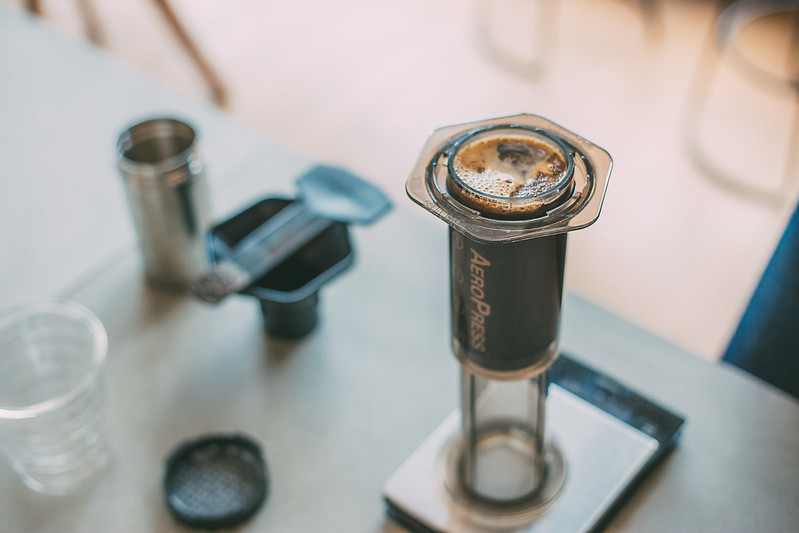
What Do You Gain with Alternative Brewing in Your Office?
- Good coffee creates a positive image of the employer – who wouldn’t like to work in a place with top-notch coffee?
- Coffee has a positive impact on employee productivity. According to Food Research Institute, half of the employees drink coffee at work, and 45% of employees say that they owe their maximum productivity to coffee.
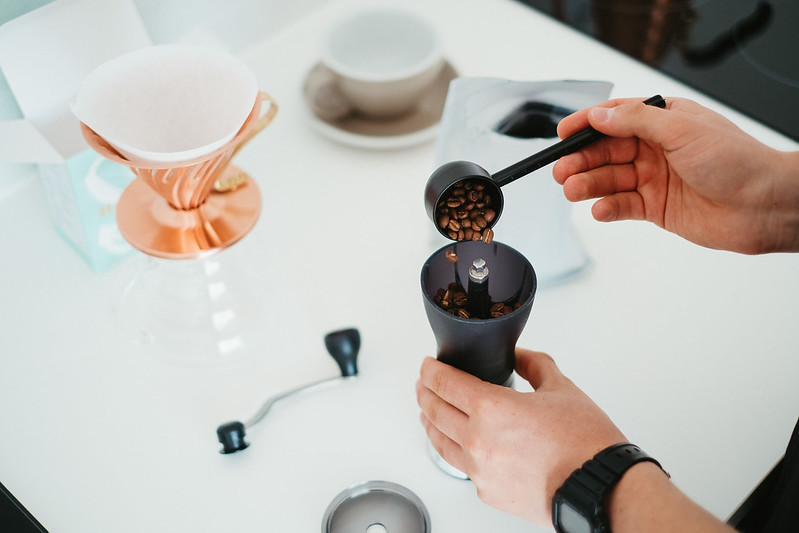
Which Coffee Will Work Best?
The most universal are Brazilian coffees. They usually have hints of chocolate and nuts in their flavour profile, which makes them perfect for milk coffees. While choosing coffee, you should pay attention to the date and degree of roast. In theory, coffee tastes best within three months after the roast date. Pour-over brewing works best with light roast and omniroast. However, ‘sky is the limit’ – don’t shy away from experimenting with coffee. Choose different varieties, origins, roasters etc. In time you’ll know for yourself which coffee is the best choice for your office.

